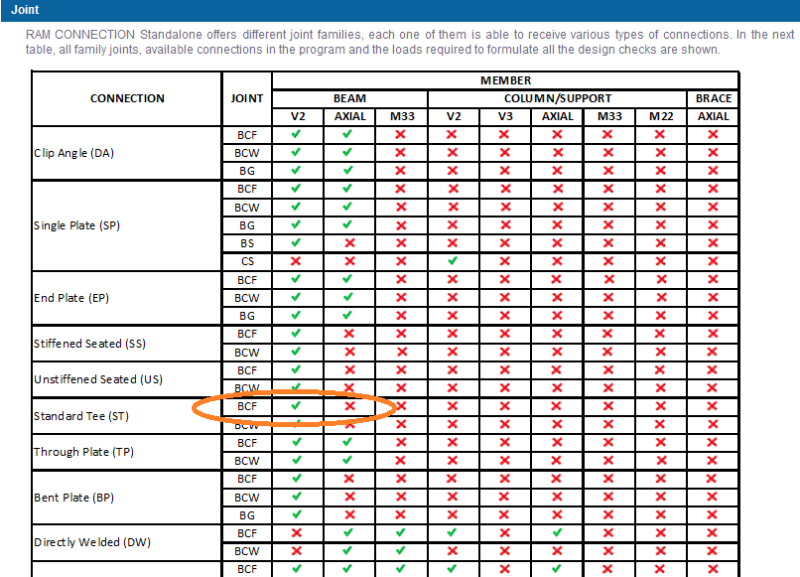Saedhalteh
Civil/Environmental
Hello all
In RAM CONNECTION there are a number of connections and each connection have specified the loads required to formulate all the design checks as shown below
now for example a standard TEE Section only designed for shear forces as it shown in the image ,
my question is this is something specifed by the program or by the code ??( Does the code speciy that TEE Connections is only designed for shear and not for axial or bending )

and if someone can guide me to good resource to understand the connection design I would really appreciate that .
In RAM CONNECTION there are a number of connections and each connection have specified the loads required to formulate all the design checks as shown below
now for example a standard TEE Section only designed for shear forces as it shown in the image ,
my question is this is something specifed by the program or by the code ??( Does the code speciy that TEE Connections is only designed for shear and not for axial or bending )

and if someone can guide me to good resource to understand the connection design I would really appreciate that .

